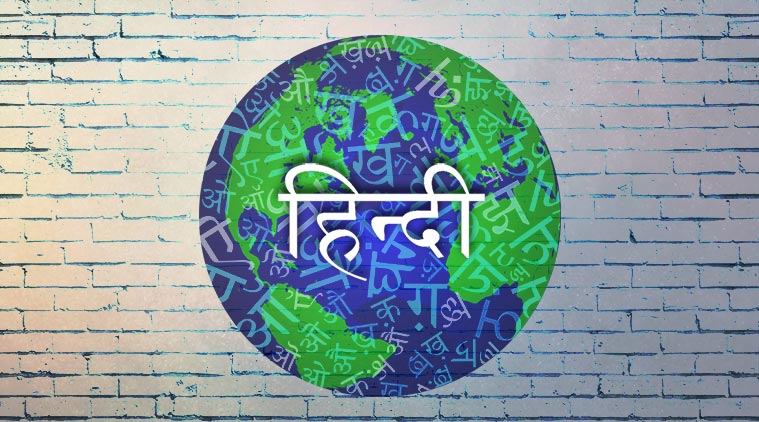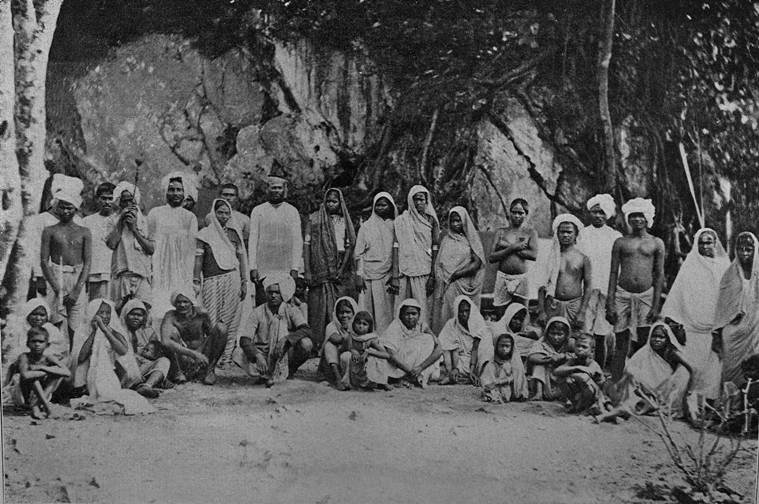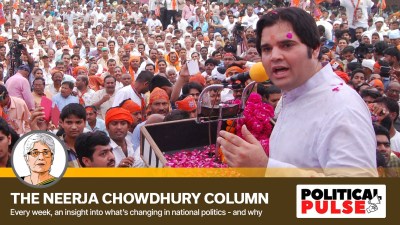- India
- International
How Hindi travelled to these five countries from India
As we celebrate Hindi Diwas, here is a look at five other parts of the world where Hindi has an official status or is immensely popular.
 The presence and popularity of Hindi in large parts of the world today is reflective of India’s colonial history and the movement of people that colonialism gave rise to
The presence and popularity of Hindi in large parts of the world today is reflective of India’s colonial history and the movement of people that colonialism gave rise to
On September 14, 1949, the Constituent Assembly of India adopted Hindi as the official language of the newly formed nation. The Indo-Aryan language had been in use across large sections of India in multiple forms by then and had in fact been carried outside the shores of the country by those who settled in other parts of the world through centuries. The migration of Hindi, in particular, the variant used in parts of Bihar, Uttar Pradesh and Rajasthan, is intimately tied up with the history of India itself.
Its presence and popularity in large parts of the world today is reflective of India’s colonial history and the movement of people that colonialism gave rise to. As we celebrate Hindi Diwas, here is a look at five other parts of the world where Hindi has an official status or is immensely popular.
Fiji
The island country in the South Pacific ocean is the only other country, apart from India, where Hindi is designated as an official language. The migration of the language to Fiji can be traced back to the late nineteenth century, when it became a British colony and when the colonial authorities needed imported labour in order to sustain the sugarcane industry there. Majority of those who formed the indentured labour force belonged to the linguistic region of northern India that is referred to as the Hindi belt, that today consists of states like Bihar, Uttar Pradesh, Rajasthan among others. There were labourers from other parts of India as well.
Over time, a distinct variety of Hindi developed in the island, that was more a product of the need for the labourers belonging to different parts of India to communicate with each other. The Fiji Hindi is a combination of elements from Hindustani and those from the native language there. Eventually, even the indigenous population of Fiji picked up Hindi. Today, about 37 per cent of Fiji’s population consists of Indians, a large majority of whom are the descendants of indentured labourers. The popularity of the language was recognised by the government after its independence in 1970 and Fiji Hindi continues to be recognised as an official language in the country.
Mauritius
The island nation on the Indian Ocean passed on as a colony from the Dutch to the French to the British over the course of three centuries. Indian presence in Mauritius can be traced back to the time when it was a Dutch colony and a large number of slaves and convicts were brought in from Bengal and South India. The trend followed during the French colonial period as well. With the British occupying the island in 1810 and the indentured labour system being established from the 1830s in order to meet the requirements of the sugarcane industry, Indian presence in Mauritius entered a whole new period.

With South Indians occupying the largest number among the Indian migrants, Tamil had turned into the most influential language of communication among them. However, over time the largest number of indentured labourers were brought in from Hindi and Bhojpuri speaking areas of North and East India. The Indian presence from these regions in Mauritius was so strong that till date, Bhojpuri which is often used synonymously with Hindi, remains one of the most popular languages on the island.
The Mauritians continue to consider Hindi to be an important part of their history, culture, and identity. Recently, at the 11th World Hindi Conference held at Port Louis, Member of Parliament, Anerood Jugnauth announced that Mauritius would put in all effort to support the recognition of Hindi as an official language in the United Nations. “We refer to India as ‘Bharat Mata’, which makes Mauritius its son. The son knows his duty,” he had said at the conference.
Singapore
As of 2015, Indians constitute the third largest ethnic community in Singapore. The South East Asian country has had economic and cultural links with India since around 500 BC when it was considered to be part of Greater India. However, a significant movement of Indians into Singapore began first after the Portuguese colonisation of the Malay peninsula and then later when the British established colonial rule over the island country. Between 1819 and the Second World War, mass migration of Indians to Singapore took place, making them a distinct ethnic community there.
 As of 2015, Indians constitute the third largest ethnic community in Singapore. (Wikimedia Commons)
As of 2015, Indians constitute the third largest ethnic community in Singapore. (Wikimedia Commons)
When the country gained independence in 1965, the new constitution granted official status to four languages – English and one for each of the largest ethnic groups. Therefore, Mandarin for the Chinese, Malay for the Malays and Tamil for the Indians, apart from English, became the four official languages of the country. Even though Tamil is recognised as the official language in the nation, Hindi continues to remain one of the most popular Indian languages in the country. The reason for choosing Tamil over Hindi was that Tamils constituted the largest group among the Indian migrants in Singapore and in the 1960s, the Dravidian movement in India with its anti-Hindi agenda had its ripple effect in the country.
However, lack of official recognition of Hindi in Singapore, despite the large number of its speakers, had led to widespread ramifications, particularly in the education sector that followed a bilingual policy of teaching students English along with one of the three other official languages. The policy turned out to be a setback for a large number of non-Tamil Indians in Singapore. As a result in 1992, the Ministry of Education in Singapore recognised five other Indian languages (Hindi, Punjabi, Urdu, Gujarati and Bengali) to be taught at schools.
The Caribbean countries
When slavery was abolished in the United Kingdom in 1833, an economic chaos was created for sugarcane plantation owners in those parts of the Caribbean which were governed by the British. In order to fill the gap created by the loss of African slaves, the English created a system of cheap indentured labour whereby around half a million workers were transferred from British India into the Caribbean countries and elsewhere. Among the migrants, majority of those who travelled to British Guiana (presently Guyana), Trinidad and Tobago as well as Suriname were inhabitants of Uttar Pradesh, western Bihar and Rajasthan, while those who travelled to areas like Guadeloupe and Martinique were mainly from the Southern regions of India. Consequently, a localised form of Hindi developed as a distinct language in the former countries where a large section of the local population consisted of Indian descendants.
Presently the Caribbean Hindustani remains the most popular language in Guyana, Trinidad, and Suriname. It is mainly a variant of Bhojpuri and borrows heavily from Awadhi. Due to some amount of South Indian presence among the Indian migrants, the language has also come to be influenced by Tamil and Telugu.
 Presently the Caribbean Hindustani remains the most popular language in Guyana, Trinidad, and Suriname. (Wikimedia Commons)
Presently the Caribbean Hindustani remains the most popular language in Guyana, Trinidad, and Suriname. (Wikimedia Commons)
Nepal
In this neighbouring country, Hindi is the mother tongue of a very small minority, but is still immensely popular and is understood and spoken by large sections of the population. In an article published by Asia Times in 2009, it mentioned that “Hindi has been in use for official communication for centuries and is understood and spoken, with local accents and variations, in all 4,000-plus villages and towns that make up present-day Nepal.” Interestingly, despite being the mother language of a very tiny part of the Nepalese population, there has been a demand to make Hindi a national language by a section of the political class in Nepal.
The demand to recognise Hindi as a national language is put forward mainly by the Madheshi people considered to be those with Indian ancestry, who migrated to the Terai region of Nepal from the late 18th century. Majority of the migrants belonged to Bihar and Awadh region of India. However, the popularity of Hindi in Nepal is also attributed to the influence of Bollywood films and music in the region.
Apr 25: Latest News
- 01
- 02
- 03
- 04
- 05






























